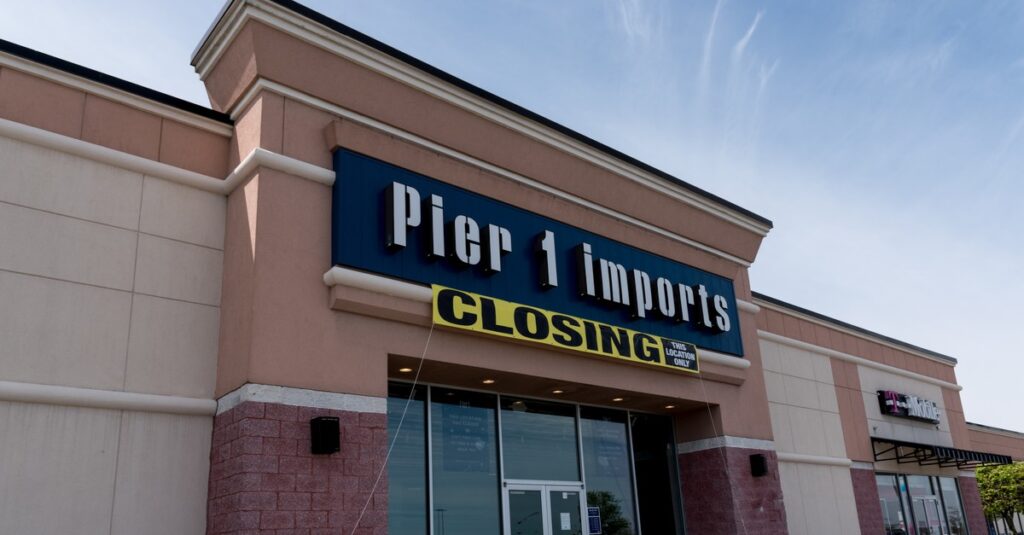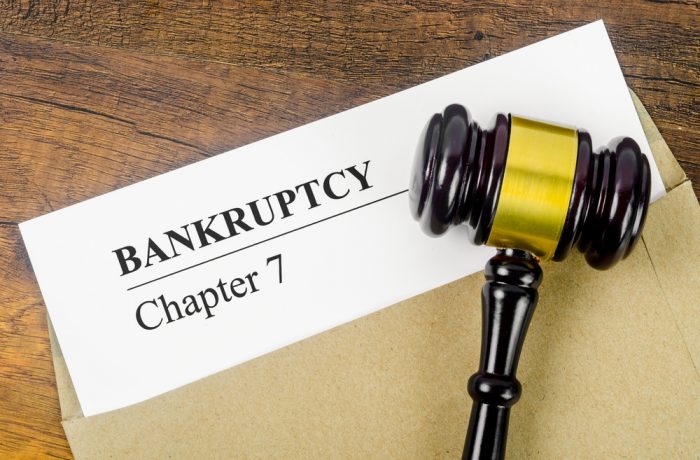Pier 1 Imports storefront facade with store closing sign, windows, doors, and sky COVID-19 pandemic ITC Crossing. – Flanders, NJ / USA – 5/20/20
By Greenberg Traurig LLP, Lexology
A look at relevant employment laws and litigation vulnerabilities that companies, including their owners, officers, and directors, should consider before ceasing operations or filing for bankruptcy.
COVID-19 continues to impact New Jersey businesses, both large and small. As a result, many companies must face the unfortunate reality of shutting down operations or filing for bankruptcy protection. When considering any change in operational status, businesses are well-advised to consider present and future liabilities, including potential exposure under applicable labor and employment laws. We address some of the relevant employment laws and litigation vulnerabilities that companies, including their owners, officers and directors, should consider before ceasing operations or filing for bankruptcy.
Ceasing Operations
A Chapter 7 bankruptcy filing results in layoffs and the liquidation of all business assets in order to pay creditors. Important for Chapter 7 filers: employment litigation claims are often unsecured and unliquidated debt capable of discharge. However, this comes at a cost, as Chapter 7 traditionally results in the termination of operations and closure of the business.
By contrast, Chapter 11 bankruptcy allows for management to continue business operations and attempt restructuring. In this context, unpaid employer contributions to sponsored benefit plans and a limited amount of employee wages, salaries, and paid time off receive priority over unsecured debts. Moreover, the business debtor customarily is granted first day motions to use cash collateral, obtain new financing and immediately pay employees their wage-related priority claims. In some circumstances, bankruptcy also allows management to approve structured bonus plans to incentivize employees to remain with the company through either a sale or restructuring. Additionally, 11 U.S.C. § 503(c)(1) provides that Chapter 11 petitioners may, with court approval, make qualified distribution payments to “Key Employee Incentive and Retention Plans.”
Bankruptcy protections provided by Chapter 7 and Chapter 11 also afford an automatic stay of certain pending litigation and a bar against lawsuit filings in order to provide the new debtor with some breathing space.
For businesses that cease operations without bankruptcy protection, the impact of employee litigation and wage and benefit claims will depend largely on the business structure, such as whether it is incorporated, a limited liability company, a partnership or an S Corp. Navigating a permanent closure without bankruptcy further requires the collection of outstanding receivables and liquidating company assets at fair market value, which may include tangible items and intellectual property. During this liquidation process, businesses should also review debts containing personal guarantees to limit personal liability.
Critically, businesses must document transactions and provide timely notice to employees and customers. Additionally, businesses should close outstanding licenses, file appropriate dissolution documents, adhere to applicable document retention policies and abide by all taxation requirements.
Labor & Employment Considerations
New Jersey Law Against Discrimination
The NJLAD prohibits discrimination based on “race, creed, color, national origin, ancestry, marital status, affectional or sexual orientation, disability, gender identity or expression, nationality or sex or liability for service in the Armed Forces of the United States.” N.J.S.A. 10:5-27. This law, in conjunction with other state and federal employment laws, should be carefully evaluated in anticipation of a business transition because the statute is construed liberally to effectuate its remedial intent. For example, the NJLAD defines “employer” to include individuals, partnerships, associations, organizations, corporations, trustees, trustees in bankruptcy, and fiduciaries. See N.J.S.A. 10:5-5(a).
In addition to potential employer entity liability, owners, officers, directors, and even company managers may be held personally liable for conduct found to aid, abet, incite or compel any act prohibited by the NJLAD. Therefore, even if an employer believes a permanent closure or bankruptcy protection adequately safeguards the business, the potential imposition of individual liability remains an important consideration.
In practice, individual liability under the NJLAD will not arise unless the business entity itself violated the NJLAD. That said, a shuttered or bankrupt entity may not possess the assets or interest to mount a vigorous defense against such claims, leaving the individuals potentially responsible for some liability.
The bottom line: businesses contemplating a closure or other transition should evaluate potential liability under the NJLAD to limit exposure for the organization and all associated individuals.
Equal Employment Opportunity Commission
Generally, employee charges of discrimination filed with the EEOC are stayed during bankruptcy proceedings. However, the automatic stay afforded by 11 U.S.C. § 362(a) is not absolute. In fact, the EEOC’s broad powers customarily fall within the governmental unit or police and regulatory exception to the stay provided by 11 U.S.C. §362(b)(4), where the EEOC has instituted litigation to effectuate a public purpose (namely to eliminate workplace discrimination). Accordingly, businesses must be vigilant of potential liabilities even during the pendency of bankruptcy and note the potential continuation of EEOC litigation notwithstanding the protections generally afforded by the automatic stay.
Worker Adjustment and Retraining Notification Act and New Jersey’s WARN Act
Employers contemplating decisions impacting the workforce must also consider WARN. The federal WARN Act requires certain employers to provide 60 days’ notice of “mass layoffs” or “plant closings.” WARN covers employers with 100 (or more) full-time employees. Generally, a notice of job loss is required when 50 or more full-time employees will lose employment. Failure to ensure compliance with WARN can be costly for employers and may impose obligations to pay employees back pay, fees, and other penalties.
Businesses contemplating a workforce reduction or closure must also be aware of comparable WARN provisions in New Jersey. Indeed, 2020 legislation made compliance with NJ WARN more onerous for employers, as it expanded the required employer notice time to 90 days and its 100 employee threshold includes both full-time and part-time employees. That said, COVID-19 has put NJ WARN on hold with an explicit amendment excluding mass layoffs stemming from national emergency and delaying the effective date of the Act until 90 days after the termination of Governor Murphy’s declaration of a public health emergency.
Importantly, federal WARN exceptions may excuse certain unforeseeable business closures such as a forced closing due to natural disaster, and may also include COVID-19 related shutdowns. However, a key consideration is the foreseeability of such closings, because a business must prove that the specific circumstances necessitating closure were not reasonably foreseeable when the WARN notice was otherwise due. Considering COVID-related shutdowns, as the pandemic has now spanned over a year, employers must carefully consider all factors to comply with WARN or face the potential imposition of liability.
Notably, employers attempting to sidestep WARN liability with bankruptcy proceedings must account for the liquidation preference structure imposed by the absolute priority rule. See 11 U.S.C. §507(a). For example, the Supreme Court rejected a bankruptcy settlement attempting to undercut bona fide WARN claims through a structured settlement. Czyzewski v. Jevic Holding Corp., 137 S. Ct. 973 (2017). More specifically, the Czyzewski court ruled that a bankruptcy court may not approve a structured dismissal with distributions that do not follow ordinary priority rules absent the consent of affected creditors. Id. at 983. Accordingly, businesses contemplating applicable closures are well-advised to obtain guidance on the WARN Act to ensure the desired outcome of any business transition.
New Jersey Wage Theft Act
New Jersey employers also face potential liability—including personal liability—for failure to adhere to the requirements of the NJ WTA. In fact, employees may seek and collect liquidated damages, which include up to 200% of wages owed.
Notably, the “employers” under the NJ WTA include both the current business entities and successor entities. Accordingly, liabilities may follow a company in the aftermath of a business transition. Of particular importance, such claims also remain viable for the entirety of the applicable six-year statute of limitations period. As a result, businesses should adhere to the requirements of the NJ WTA and remain vigilant to ensure compliance during a contemplated or planned transition.
Employee Retirement Income Security Act of 1974
Employee retirement plan benefits are not a business asset pursuant to ERISA. Accordingly, during bankruptcy, creditors may not tap into employee retirement accounts to satisfy outstanding debt(s). Employers, however, may seek to decrease plan expenses by decreasing or eliminating employer benefits (such as employer provided contributions). Businesses must carefully review plan documents and ERISA requirements to ensure compliance.
Additional Considerations
Businesses considering a sale, permanent closure or bankruptcy must also abide by applicable document retention policies and ensure compliance with other requirements related to transfer, sale, dissolution, taxation and/or other industry specific necessities.
Further, businesses desiring to permanently close may wish to consider offering employees severance pay in order to secure knowing and intelligent waiver(s) of all claims to reduce potential liabilities. That said, in consideration of bankruptcy proceedings, severance payments to business leaders and other employees must be done even-handedly to avoid liability regarding such distributions. Failure to act reasonably may provide creditors with leverage to challenge certain distributions as a fraudulent transfer or conveyance.
Conclusion
COVID and other economic realities of the day may force businesses to consider some type of transition or closure. When evaluating any change in operational status, employers should consult competent corporate, bankruptcy and employment counsel regarding potential exposure for pending and threatened litigation and employee wage and benefit claims.





